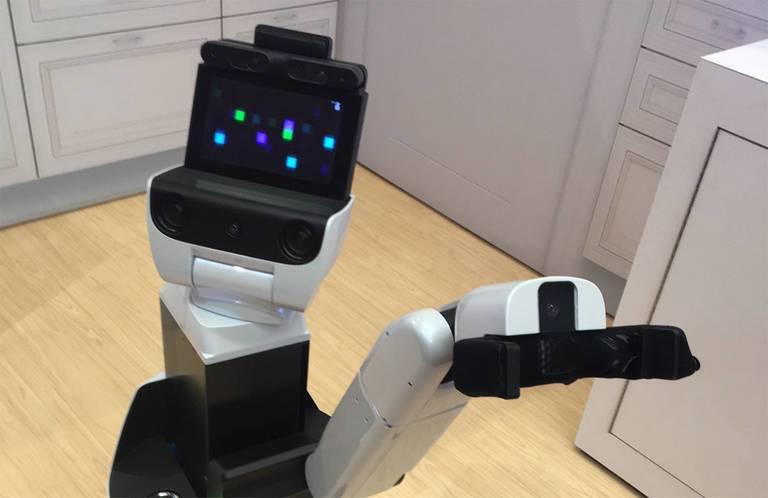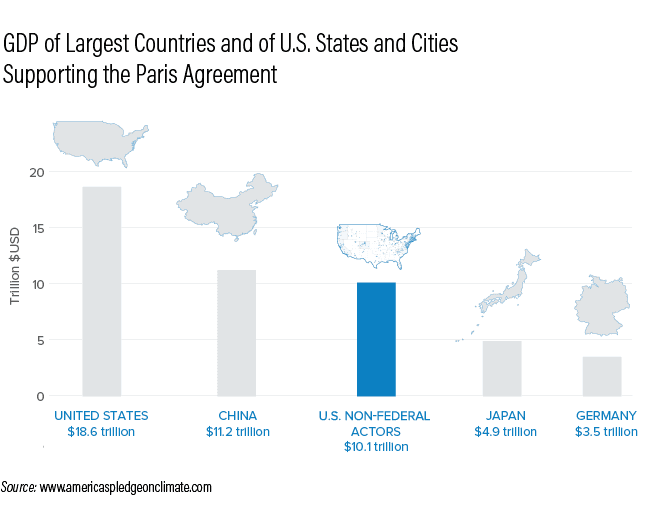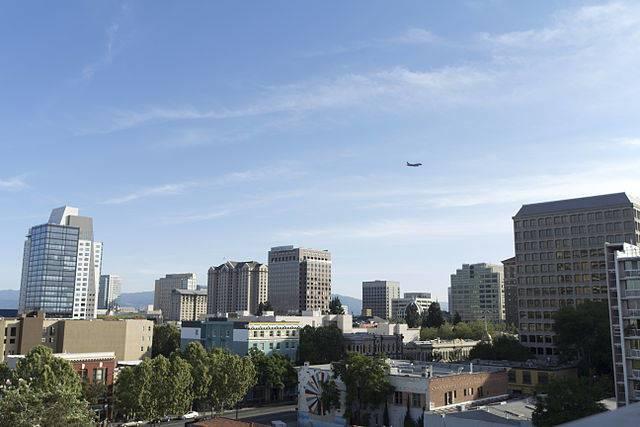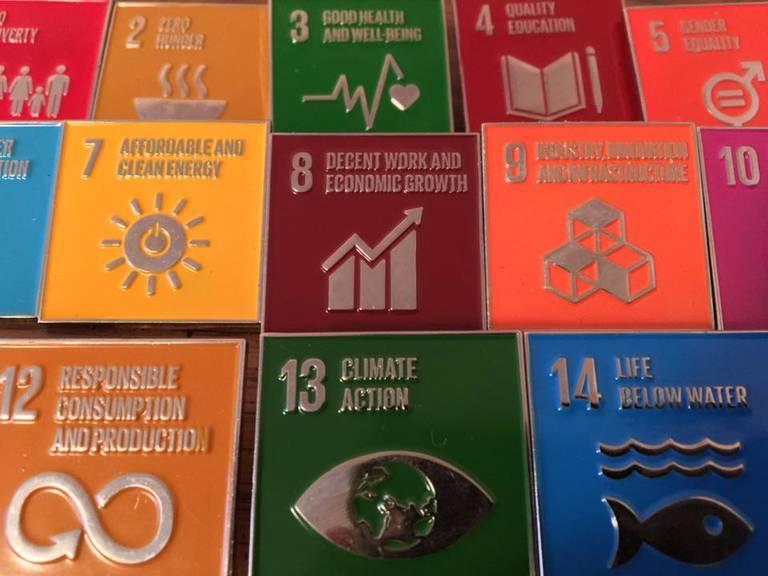Toyota Brings Mobility Inside with Human Support Robots


Toyota may be known as a car company, but it's the concept of mobility that is driving the company forward. Thinking about themselves as a provider of services is helping to define the company's role in the 21st century. One way the concept is playing out is providing mobility services to people who are home-bound or otherwise disabled. Doug Moore, Toyota's Director of Technology for Human Support dropped by Net Impact 2017 to talk about the Human Support Robot project - a perfect example of Toyota's evolution.
The Human Support division of Toyota focuses on new technology solutions and robotics that advance the freedom of mobility to more people. For example, the Human Support Robot or HSR helps with basic household tasks like fetching water and is making a world of difference to quadriplegics and other folks in need of a hand. The HSR isn't quite at the Star Wars droid level of service but it can already accomplish basic actions that free its owner from needing to call for help or to wait for inconvenient times to get simple things done. And it's much cheaper than having a 24/7 nurse in the home.
Still very much in the testing phase, the HSR has found a home with US Army veteran Romulo "Romy" Camargo who was paralyzed from the neck down during a mission in Afghanistan. Using the HSR in his home, Romy has been able help Toyota test the robot's capabilities in a real world environment - perfecting the technology on the fly. In keeping with that spirit, Moore explained the Toyota concept of "Genchi Genbutsu" which loosely translates as "Go and See."
"It's the basic principal of the Toyota production system and what's happening here with the HSR is very much a part of it," he explains. In other words, the robot will improve best through receiving real world performance data. This
Right now the HSR can follow both voice and tablet commands to fetch items, answer doors, and help its owner communicate. It's got one main arm and a litany of cameras and other sensors that keep it from running into things. The sensors also allow it to identify and retrieve any number of pre-programmed objects. It's also capable of acting as a two-way communications device that liberates its owner from needing to pick up a phone.
It'll be some time before the HSR makes its way into the wild, but tests in Japan as well as in the U.S. are yielding results. At the end of the day Toyota's goal is to be known as a mobility company - one that provide it for all, including disabled folks.
https://www.youtube.com/watch?v=9b5T4yJvVfs
Why independent food and drink businesses should lead the way in combating global warming


By Suranga Herath, CEO, English Tea Shop —There have recently been two major stories suggesting an imminent crisis in global agriculture. Firstly, we heard from Bioversity International that 12 major crops – including potatoes, coffee and chocolate – may become extinct in the not too distant future.
Then, we heard that, as a result of producing food for livestock, the world is on track to lose two-thirds of its wildlife in the next two years.
So far so bleak…and so predictable. It seems that, despite the recurrence of stories such as these, we continue to keep our heads down by avoiding the big environmental issues – very possibly until it’s too late.
But is it too late?
My business is independent, and this means that my leadership team and I are – by and large – in control of every aspect of operations and supply chain. We find that, actually, there is a great deal within our immediate control to make a positive impact on the world around us. And I don’t mean in terms of a Corporate Social Responsibility initiative – I mean in terms of the very core of how the business operates.
Why independent food and drink businesses should lead the way
Unlike most larger businesses, independent producers tend to be more agile and this makes us more responsive to the world around us. It also gives us the licence to try new things, to disrupt and to innovate. At time when most environmental warnings are disregarded, the leadership and vision of independent businesses has never been more vital.
In particular, I believe that we have the ability – and indeed the obligation – to show how environmentally sustainable practices and long-term business growth can go hand in hand. By doing this, I believe we can lead the way for industry as a whole.
Four ways smaller independent food and drink manufacturers can lead the way in promoting sustainable food production practices
1. By showcasing the benefits of a transparent supply chain. Thanks to the introduction of the Modern Slavery Act, transparency in supply chains has quickly become one of the biggest topics of the day. Smaller, independent businesses are much better placed to keep their supply chains transparent by adopting models such as direct trade.
2. By pioneering new ways of working more closely with suppliers such as farmers. Smaller businesses are more able to develop close and personal relationships that reward long-term dedication. In my view, supporting farmers with developing and improving their practices is absolutely crucial when it comes to lessening the impact of food production on the environment. That’s why at English Tea Shop, we build incredibly closely relationships with our tea farmers in Sri Lanka, and offer them a huge amount of advice and support. This helps them to improve their farming practices, it helps reduce the strain on the environment, and crucially for us, it gives us access to exceptional quality tea!
3. By driving demand for organic. After a lull, consumer demand for organic produce is rising once again and I believe independent companies played a big role in driving and meeting this demand. In my view, to avert environmental disaster, the future has to be organic…independent companies have the freedom to invest in this, placing them in prime position as demand continues to grow. That’s why, this year my company went 100% organic and we haven’t looked back since!
4. By showing how a focus on sustainable development can lead directly to strong, long-term growth. There’s a common view that sustainability is anathema to growth, but I couldn’t disagree more and I believe that we are entering a new era where sustainably-minded businesses will be the ones to grow most quickly. Smaller independent businesses have a huge role to play in proving to a wider audience that a sustainable business model which shares value through the chain can facilitate fast-growth.
All in all, we can no longer afford to ignore the impact our business has on the environment. It is by pushing our boundaries through innovating products, methods, and structures that we as independents can actively carry the sustainability agenda forward. Together, we are better placed to drive industrywide change – so why wait?
Suranga Herath is CEO, English Tea Shop, a fast-growing company that is also a pioneer of sustainable practices, putting its employees and suppliers’ livelihoods first using the principles of value sharing.
For more information visit www.etsteas.co.uk
3 Best Practices to Remember When Choosing a Sustainability Framework


This series is sponsored by Tetra Pak and produced by the TriplePundit editorial team.
As early trading and bartering have grown into a booming, trillion dollar world economy over the last several hundred years, so has the need for companies to reevaluate how they are participating in this economy.
Year after year, surveys show that consumers are increasingly interested in sustainability. They want more information about products, about labels, and are more careful with brand choices. These growing desires are the new reality of business in the digital age and can be both a challenge and an opportunity for the business community. As consumer interest has grown, sustainability reporting has developed alongside it and is now common practice for many organizations. Yet the field of sustainability reporting can be intimidating for newcomers. CDP, DJSI, GRI, GRESB, SASB and the UN Global Compact: Where does one begin?
We sat down with Tetra Pak’s Global Sustainability Leader Mario Abreu to learn more and it quickly became clear that sustainability reporting begins where many things in life often begin; from the inside out.
Tetra Pak calls itself the world's leading processing and packaging solutions company. Their brand promise is simple: to ‘protect what’s good.’ For Tetra Pak that means protecting food, protecting people, and protecting futures. Tetra Pak, founded in 1951 is one of three companies in the Tetra Laval Group – a private company founded in Sweden. Tetra Pak produced their first corporate environmental report in 1999 and began reporting on social indicators in 2004, the year that they signed on as a signatory to the UN Global Compact. The company recently released its 2017 sustainability report in accordance with the GRI G4 core guidelines. It also uses the CDP framework to report on climate and forest disclosure and is also reporting through a number of platforms that span environmental impact, supply chain, and human resources.
Companies who report benefit from a number of advantages including the chance to develop a strong understanding of the risks and opportunities associated with their business. In preparing for their GRI assessment, Tetra Pak conducted an independent materiality assessment. This assessment essentially allowed the company do a SWOT (strengths, weaknesses, opportunities, threats) analysis of their business.
The assessment results helped to create a channel for internal review and discussion. Although it was a complicated undertaking, Mario is happy with the process and results, he explained:
“I’m proud of the fact that for our materiality assessment we reviewed the comments of 3,500 consumers through a consumer survey, we conducted internal workshops and interviews with about 50 colleagues including the global leadership team, and we looked at the materiality reports of our key customers. I’m not calling it a framework, but I believe this was something that was very helpful for us. It helped to discover the 14 most material social and environmental aspects for Tetra Pak. I would recommend this, this was very constructive for us.”
While companies like Tetra Pak have been reporting for years, other companies are just starting out on their reporting journey. Mario admits that assessments that might be easy or only require moderate effort for Tetra Pak might be impossible for smaller companies. But this, he believes, is why a variety of reporting techniques are necessary. He advocates strongly for companies to do what they can with the resources they have:
Reporting, he explains, “can be difficult, but it is worthwhile. On the one hand, often environmental and efficiency improvements tie into financial rewards. [Reporting] will allow you to invest money more wisely if you understand what potential risks you may have. Is water, electricity, or carbon tax going to become a concern? On the other hand, the elements essential for a report are also the elements needed to drive an efficient business and minimise business risk. There are challenges there, but there are many benefits to be reaped from putting in the time to collect the data and collect the information required to put together the reports.
So, how does one get started or grow one’s reporting efforts? Based on Tetra Pak’s success in the space, Mario offers three best practices:
- Data Management. Tetra Pak continuously collects data from their plants and biggest suppliers. They currently use an online platform which is a big improvement over simple spreadsheets. Find a system that is tailored for employees and that’s easy to use.
- Materiality Assessment. It is the best way to engage and hear others and learn the nuances of your business. “At Tetra Pak, we brought together the head of corporate governance, the head of HR, the head of supply chain, and many other leaders. We used the GRI platform and its lists; economic, environmental, and social. We looked at the lists together and decided among all of them, which is most important.”
- The Sustainable Development Goals (SDGs). Tetra Pak set aside time to review the 169 targets associated to the 17 SDGs. The goals are intended for society at large, so we filtered them by asking the question, ‘how can we really contribute to these?’
Ultimately, nine of the 17 SDGs had business relevance for Tetra Pak. While they support all of the goals, there were some targets that made more sense for the company to pursue. “This also helps you decide what direction you want to go,” described Mario, “If we consider targets that are close to what we do, they can serve as a north star for us.”
Choosing where to start or grow your reporting journey may not be easy, but it is necessary. Successful sustainability strategies are not pulled out of the sky - they are built on the foundation of a company’s values, core business, a desire to authentically connect with and engage their consumers. Reporting creates an atmosphere of learning about your business and becomes a channel for internal review and improvements. While GRI is the most widely used reporting framework, there are many others tailored to specific indicators that could be a fit for you. Do your research and create the resources and channels for the successful collection of data and information. As Tetra Pak shows, any company can improve over time by using sustainability reporting to benefit the bottom line.
Images credit: Tetra Pak
Rogue U.S. Delegation Makes Huge Splash at COP23


COP 23 has turned out to be quite the party. While the official delegation is somewhat smaller than previous groups, given President Trump's stated desire to leave the global agreement, a private American coalition is out in full force to demonstrate just how little a Federal withdrawral impacts America's ability to meet its intended nationally determined contribution.
The U.S. promised contribution to the global fight against climate change is an economy-wide target of reducing its greenhouse gas emissions by 26-28 per cent below its 2005 level in 2025. This goal is considered to be a science-based goal, in line with 80 percent below 2005 by 2050. These goals are in spitting distance of a meaningful contribution to the collective effort to keep the global temperature rise below 2 degrees Celsius.
A huge coalition of U.S. states, cities and businesses supporting climate action is hosting the U.S. Climate Action Center pavilion separate from the official U.S. delegation. Lisa Friedman describes the alternate U.S. delegation in stark contrast to the official one:
The office of the official American delegation at the international climate talks here is almost always closed... But there’s another group of Americans who are happy to be found. They are gathered in a nearly 27,000-square-foot inflatable tent adorned with American flags and red, white and blue signs proclaiming that states, cities and businesses are “still in” the Paris agreement, despite President Trump’s vow to leave it.
The alternate American pavilion, with its free espresso truck, tins of themed M&M’s and wireless internet that tells new users “the U.S. has not gone dark on climate action,” has rapidly become a hub of activity at the United Nations global warming negotiations taking place this week.
On Saturday, this unsanctioned group launched America's Pledge, a report by California Gov. Jerry Brown and Michael Bloomberg (written by World Resources Institute and Rocky Mountain Institute) that analyzes the breadth and influence of U.S. non-federal action on climate change. In fact, the actions of those outside the federal sphere are quite substantial -- the GDP of this group is just over $10 trillion -- sitting third after China and before Japan on the global stage.
That means that in addition to all those zeroes, this group of business leaders, states and municipalities controls an enormous amount of carbon flow. And the good news is, this group is poised to curb a lot of it:
The report highlights the 10 states with cap-and-trade programs and 96 U.S. businesses that have already set internal carbon prices (linking the cost of doing business to how much carbon was expended). It also finds some major sources of carbon reductions that will continue with or without federal mandates:
- Electricity generation: Twenty-nine states, representing more than half (56 percent) of retail electricity sales in the country, have mandatory renewables commitments in place.
- Transportation: Thirty U.S. cities have committed $10 billion to purchase 114,000 electric vehicles (EVs) for their municipal fleets—a number roughly equivalent to all the EVs sold in the country in the first eight months of 2017.
- Building and industrial energy use: More than 400 companies, representing more than 13 percent of total U.S. commercial building space, and almost 2,600 industrial facilities have voluntarily committed to reduce their energy use through the U.S. Department of Energy’s Better Buildings / Better Plants program.
- Methane: Methane, also known as natural gas, leaks out of landfills and contributes to global warming. Twenty states have programs set up to develop landfill gas-to-energy projects, which capture methane to use for electricity generation.
- Hydrofluorocarbon (HFC) Emissions: HFCs are up to 12,000 times more potent than CO2 and are used in refrigeration, air-conditioning, building insulation and other applications. Forty-three supermarkets have committed to reducing their HFC emissions, with 533 individual stores becoming certified under this program since 2008.
- Land-use and forestry: More than 3,000 communities are implementing urban forestry measures through Tree City USA, including maintaining a tree board or department and having a community tree ordinance.
These are all major bright spots in a somewhat dismal story of climate change impacts and global collaboration. Of course, things would be easier if the federal government brought its $8.5 Trillion in economic activity to bear.
When you encounter a difficult problem in life, sometimes the only way out is through. The alternate U.S. delegation showcases another viable option: going around.
Homelessness Looms in the Shadow of Silicon Valley Tech


The old assumptions about homelessness were that such citizens living on the streets were mentally ill, chose this lifestyle or perhaps were just down on their luck.
Yet today in Silicon Valley, across much of the Bay Area, and along the west coast, many of the homeless are indeed down on their luck – but they hardly chose this lifestyle as many are working long hours, yet simply cannot afford to put a roof over their heads.
That is the assessment of a recent investigation by the Associated Press, which profiled the homeless living in cities such as Mountain View and Palo Alto. The voice that Janie Har gave to many of these struggling workers was chilling. Their story was not about people living in poverty because they are unemployed – many of them work in jobs by which they could afford to live decently just about anywhere else in the U.S.
But in cities such as Cupertino, the home base of Apple, the working poor are hard pressed to afford living in this city of 60,000, where housing prices have shot up almost 10 percent the past year alone. Zillow estimates the median home value in Cupertino is approaching $2 million, while the median rent is close to $4,000 a month.
Like many of its neighboring Silicon Valley cities, Cupertino has seen encampments of homeless people at an increasing rate; one church has offered to work with the city and local non-profits by allowing people living in campers, RVs or cars to use its parking lot so they have a safe place to park and sleep overnight. Nearby Mountain View has a patchwork of similar programs.
Renting RVs has often been the only choice, short of sleeping in a car, that people working in the service industry or construction have available. The AP profiled one young family, which is paying $1,000 a month to live in such an environment. Many of these workers struggle to find a place to park these vehicles. As a result, they risk citations as cities respond either to citizens’ complaints that these vehicles create a traffic or safety hazard.
But chasing the homelessness crisis away is hardly making it disappear. The AP suggests at least 168,000 people across California, Oregon and Washington are homeless, an increase of 20,000 from only two years ago. And many of them are living not far from the shadows of the buildings that house the headquarters of Apple, Facebook and Google – or in the case of Seattle, Amazon.
The technology sector has made some token efforts at alleviating the homelessness, a situation that continues to get worse because these companies’ success has helped fuel the price of housing in the first place. Google, for example, has funded a non-profit that provides showers to the homeless in San Francisco.
But the heavy lifting in trying to solve growing housing crisis is being done by nonprofits such as Silicon Valley Rising. This coalition of civil rights groups, community organizations and unions strives to raise awareness of the region’s housing problems. The group calls for a rise in wages, as well as reform of the “contractor” system in which many of Silicon Valley’s poorest citizens work for low pay - yet generally are denied healthcare benefits, medical leave or any measure of job security.
Silicon Valley companies often tout that they have the technologies that can help solve society’s most pressing problems. These companies also brag about the tremendous talent recruited worldwide that work for them while creating the products of tomorrow.
But Silicon Valley’s tech workers are able to enjoy the lifestyle available to them in part because of the work of food service, construction and healthcare workers. Perhaps asking these companies to build housing to help provide a safe place for these lower-wage workers is a stretch – but these corporations could be more generous in funding the nonprofits that are scrambling to help landscapers, restaurant workers and even teachers secure affordable housing so they can sleep safely at night, instead of inside an RV or car.
Image credit: Adam Schultz/Flickr
Tensions Rise as Federal Decision on Coal Protections Looms


What a mess Energy Secretary Rick Perry dumped into the lap of FERC, the Federal Energy Regulatory Commission. Perry has taken a lot of heat for proposing new protections for coal and nuclear power plants, but go-ahead has to come from FERC. The decision is not expected until December 11, and meanwhile the tension is mounting to a fever pitch.
FOIAs filed over coal protections
Perry's new proposal would essentially create new subsidies for outdated coal and nuclear power plants by requiring power plants to keep a 90 day supply of raw material on site. And no, the sun doesn't count.
The pushback has been fierce. In one recent development, on November 9 a group of environmental organizations filed Freedom of Information Act papers with both FERC and the Energy Department. According to the Sierra Club, among others, the Perry proposal could "force electricity customers to bail out old, expensive coal and nuclear plants that can no longer compete in America’s 21st century energy marketplace."
That pretty much sums it up. Perry based his proposal on a controversial new grid study, which essentially concluded that conventional coal and nuclear power plants could continue operating, but would require additional subsidies from taxpayers and ratepayers.
A draft version of the new grid study emphasized the benefits of microgrids and renewables, and even after some additional tweaking it still leaned in that direction.
The final version provided Perry with a platform for arguing that conventional baseload coal and nuclear power plants deserve special protection because they are needed to maintain grid stability.
Perry's FERC proposal would create an "unprecedented" new rate structure that would enable outdated baseload power plants to recover costs plus a "fair return on equity," even if they cannot compete with other sources.
According to The Sierra Club, a previous FOIA action revealed that Peabody Energy and FirstEnergy, got "closed-door access" to Energy Department strategy sessions aimed at keeping coal and nuclear plants afloat.
Miles Farmer, Clean Energy Attorney for the Natural Resources Defense Council, explains the goal of the new requests:
“If industry lobbyists helped draft this outrageous coal and nuclear bailout proposal, which could cost U.S. families and businesses billions of dollars in higher energy bills every year and at an untold price to their health, the American public needs to know that. Let’s pull back the curtain to find the truth.”
Even coal stakeholders hate Perry's FERC proposal
Perry's proposal has gained little support outside of the U.S. coal producing and nuclear generating sectors. Even within the fossil fuel sector, reviews have been mixed. Natural gas producers hate it, and electricity producers are generally not fans, either.
Energy giant NRG, for example, still has coal and nuclear power plants in its fleet but its renewable energy portfolio is burgeoning. The company has argued against enabling non-competitive, outdated power plants to continue operating.
Another good example is Xcel, which is depending on wind energy to power itself toward an 85 percent carbon-free future by 2030.
For that matter, Perry's own agency has been vigorously promoting microgrids and renewables. Just last week, the Energy Department spelled out a strong argument for utility scale concentrating solar power plants to provide for grid reliability without the drawbacks of coal and nuclear:
“One of the biggest advantages of CSP is its reliability as an energy source and predictable costs. Unlike conventional fuels, there’s nothing to mine, ship, burn, or store as waste; there’s an abundant, unending supply of sunshine.”
Yes, they really hate it
One standout example of the utility industry's fraught relationship with coal is the powered Navajo Generating Station. It is partly owned by four Arizona utility companies, and last winter they voted to shut it down after its lease expires in 2019.
Think Progress is out with a new long-form article providing many interesting details about the Navajo Generating Station's troubles. The full piece is well worth a read, but for those of you on the go here's a representative tidbit from Salt River Project, a public utility that owns the controlling share in the plant:
Mike Hummel, deputy general manager of the Salt River Project, told the Arizona Republic that without federal subsidies, a new owner of the plant would not be able to operate it cost-effectively. He noted that each utility owner of the Navajo Generating Station has owned and operated coal plants. “We are all very good at it, and we are all not able to make it work. That’s why the owners are choosing to exit,” Hummel told the newspaper.
The decision was based primarily on the availability of low-cost natural gas.
Somewhat ironically, the Energy Department supports the move to natural gas, with an analysis indicating that an economic turnaround was nowhere in sight for the plant.
Think Progress also cites The Institute for Energy Economics and Financial Analysis, which pins the cost of keeping NGS open just until 2019 at $414 million.
The price tag for an additional 10 years of operation after 2019 comes out to the $1-2 billion range.
The four utilities could get stuck holding the bag after all. The plant is a critical economic engine for The Navajo Nation, and as it turns out, Peabody Energy -- the same company with the "closed-door access" to the Energy Department -- is the coal supplier to the Navajo plant.
According to Think Progress, Peabody has been working with the Interior Department to find another operator for the plant.
Interestingly, Interior already has a partial stake in the Navajo plant in the plant through its Bureau of Reclamation, for the purpose of pumping water for the Central Arizona Project.
Some officials have floated the idea of Interior taking full ownership. That seems like a long shot under the terms of the Bureau of Reclamation's congressional mandate, but considering the Trump Administration's track record on adhering to laws and legal precedents, anything could happen.
Photo credit: Navajo Generating Station by elfon via flickr.
How to Run With the Sustainable Development Goals


The United Nations’ Sustainable Development Goals (SDGs, also known as the Global Goals) are not just for the environmental or social impact sector. In fact, they are designed for everyone as they can serve as inspiration for every person, company and NGO that seeks to do their part to transform our world. The SDGs apply to government and the private sector, cities and rural areas, and while they may at first seem tailored for emerging economies and the developing world, the SDGs are also relevant to the world’s more industrialized and wealthier societies.
“The SDGs are not just about India, Africa or Latin America,” quipped Kim Polman, founder of United Kingdom-based Reboot the Future.
During the Idea Forum at last week’s Dreamforce in San Francisco, Polman was among several leaders who offered attendees ideas on how to take action, measure their work against the SDGs and motivate the next generation to become involved.
For Polman, working within the SDGs framework starts by embracing a timeless principle, one that transcends many cultures and religions.
“We can do that by promoting the Golden Rule,” Polman said during an interview last week with TriplePundit. “The Golden Rule empowers us to take actions though a modernized action of treating others how you wish to be treated, and to remember to reflect on the effects that our actions have on people and the planet.”
Reboot the Future has been working to send that message both by promoting this idea at high-profile events such as the World Economic Forum in Davos as well as embedding these principles in schools and universities across the globe. During its first year, the organization set a goal to reach 250,000 educational institutions.
The group has also launched programs to ensure that the Golden Rule’s applicability to the SDGs is entrenched across society. For example, Reboot the Future wants to nip any anxiety about how the surge of artificial intelligence could have on society by working with technology companies to embed the Golden Rule in algorithms. Meanwhile, the group is also “shouting from rooftops” to ensure the world’s largest businesses also instill this way of thinking.
“Investors are a crucial part of the economy, and they need to step up and take a stand on social responsibility issues,” Polman told an audience during the Idea Forum at Dreamforce.
For Piers Bradford of Project Everyone, the organization responsible for the vivid color-block icons that showcase and communicate the SGDs, companies would be wise to follow how governments and NGOs are implementing these goals.
“There is a $12 trillion business opportunity in pursuing the SDGs,” said Bradford while sharing a state with Polman and other leaders last week in San Francisco. “Pursuing profit or the SDGs is not an either/or proposition.”
Those opportunities could be in climate change mitigation, with obvious ones in clean energy technologies such as solar or electric vehicles. In addition, Bradford insisted businesses did not have to search too hard as more governments enact policies in tandem with the SDGs.
Bradford also explained that the SDGs allow new alliances to emerge. One key stakeholder group is citizens who at first may be overwhelmed by the 17 goals and the 169 targets. But the beauty of the SDGs, offers Bradford, is in their inspiration and how easy it is for the ordinary citizen to pick up on them. The trick is to distill this complicated UN agenda into something tangible to which ordinary people can relate and feel passionate about as well.
“This is simply a plan for the planet, and the people on it,” continued Bradford. “If we can achieve the goals, this will be the last generation to live in extreme poverty, the most determined generation to end inequalities, and the first generation to not be threatened by climate change.”
During an interview later in the day with TriplePundit’s Nick Aster, Bradford offered other ideas on how citizens can take action in alignment with the SDGs:
“Once you start understanding this universal nature of how many different issues are incorporated within the goals, you realize that everything you’re campaigning for, everything that you’re really passionate about - whether it be better education for your kids or the worst effects of climate change - there will be something within the goals that reflects what you’re campaigning for and what you’re passionate about.”
On that point, more evidence suggests that proponents of the SDGs can also benefit by grooming a more successful and sustainable organization from economic, cultural and performance perspectives.
An example of an organization that says it is taking such an ethos to heart is John Lewis, a chain of department stores in the United Kingdom that dates back to the mid-1800s (and also owns the supermarket chain Waitrose). “Bringing quality to life” is the company’s mantra, and according to Eva Cullen, the company’s head of delivery, the chain’s seven guiding principles is in lockstep with the SDGs.
“Our definition of success is to make enough profit to run a sustainable business to run the next 150 years,” Cullen told the Dreamforce audience. She explained that the company’s commitment to sustainability starts with the supply chain. Furthermore, it also is important for an organization to engage its employees – a call to order that appears to be working well for John Lewis as Cullen explained it is common for employees of the company to stay with the firm for decades.
In the end, whether it is a 150-year-old company such as John Lewis, or someone starting a new social enterprise, Bradford reminded the Dreamforce audience of the task at hand: "Starting this journey of awareness and moving people to action is critical to scaling up the SDGs.”
Image credit: Leon Kaye
Milan's Lush Vertical Forests Scale Up Like Skyscrapers


We've heard it time and time again: Trees are the environment's best friend. They help cleanse the atmosphere of excess carbon dioxide and other more harmful gases. In the process, they help restore the oxygen we need to breathe. They provide shade -- a valuable quality in today's warming climate. And they're pretty.
Architects have been struggling for decades to figure out just how to use those qualities best in urban design. Cities like Seattle and Vancouver BC Canada pre-program parks into their city planning. Small towns have grown up with that thinking, too.
But how do you integrate that mindset into densely packed neighborhoods with little room in which to add parks and green spaces?
One architect in Milan, Italy is answering that problem by developing architecture that comes with its own vertical forests.
Some would say architecture is what Milan is all about. Its 15th century Duomo (Cathedral) di Milano and its remarkable 19th century shopping center Galleria Vittorio Emanuele II are just a few of the landmarks that have defined the city most known for its Leonardo da Vinci mural, The Last Supper.
But the centuries of development haven't exactly left a lot of room for climate-friendly green spaces like spacious parks and forests. They do exist, points out blogger Jessica Spiegel, who has counted about a dozen green locations in the city of 1.3 million. But expanding them in a city that was founded some 2,300 years ago is challenging
Unless of course, you're willing to think outside the box (or high rise in this case), like Stefano Boeri, an architect with a specialty in urban redevelopment. His Bosco Verticale (Vertical Forest), which comprises two high-rise apartment buildings in the center of Milan's busy metropolis is designed to increase space not just human habitation, but for forests as well.
Each floor of the 290-360-foot buildings is surrounded by numerous extended planters that can hold dozens of trees, shrubs and other plants that can grow naturally in the Milanese area. With more than 700 trees (some ranging as tall as 29 feet) and 15,000 shrubs and floral plants, the two towers not only provide a lush and scenic view for apartment dwellers, but a home for numerous species of birds and insects that dwell among the "forests."
According to Boeri's firm, laid flat the mini forests would equal almost 5 acres of forest on land. The amount of vegetation that has been allowed to grow over time creates its own microclimate that produces oxygen and removes carbon dioxide from the atmosphere. It also acts as a natural corridor for wildlife, connecting the city's other small parks with the bird and insect population. Arbolists (rather than gardeners) care for the Bosco's natural habitat. Tree specialists are lowered by guy wires to inspect the trees and administer care on a regular basis.
Boeri and his associates, Gianandrea Barreca and Giovanni La Varra completed the "Bosco Verticale" project in 2014. Since that time the team has won numerous awards for its ingenuity and contributions to urban planning.
It's also spawned the imagination of architectural designers around the world, which Boeri, who now heads the Stefano Boeri Architetti firm in Milan and Singapore, makes a point of featuring on his website in an effort to encourage further dialogue about the ways that urban planning can actually integrate elements of nature and conservation.
The firm has also launched a number of other projects in Utrecht (Netherlands), Paris and Liuzhou (China). Liuzhou's "Forest City" is under construction and once completed is expected to be able to absorb as much as 10,000 tons of CO2 per year. Unlike the Vertical Forest of Milan, the office buildings, residences, hotels and public facilities will be "entirely covered by plants and trees."
Stefano Boeri is also renowned for his cultural and artistic contributions. He curates the website TheTomorrow.net, which encourages dialogue among various professions about the future of European culture and its ongoing development.
Flickr images: Alessandro Bovini; Forgemind ArchiMedia; Andrea Passoni
Every day is World Vegan Day at Dr. Bronner’s


By Antonio Pasolini — Natural soap and body care company, Dr. Bronner’s, had a lot to celebrate on World Vegan Day (1st November). Besides making organic, cruelty-free products, the company is a massive supporter of animal advocacy groups, besides other causes.
By the end of 2017, Dr. Bronner’s will have donated over $600,000 to animal charities. The beneficiaries include organizations that expose the suffering of animals in factory farms, protect sea animals, and educate the public.
One partner organisation is the famous frontline activist group Sea Shepherd, whose German chapter received support from the company to purchase its first vessel, the MV Emanuel Bronner. The vessel will be used to protect wildlife in the Baltic Sea.
Elsewhere, Compassion in World Farming received a donation of $100,000 to be split between its UK and USA operations this year. Dr. Bronner’s also continued to support Farm Forward, an organisation that supports advocacy around Jonathan Safran Foer’s best-selling book, Eating Animals, now a documentary with Oscar winner Natalie Portman and directed by Christopher Quinn.
With this new round of donations, the company arrives at its fourth year of commitment to supporting animal advocacy and other causes such as fair trade, regenerative organic agriculture, drug policy reform, and wage equality.
“When I chose to adopt a vegan diet over 20 years ago, I concluded that though I have a capacity to forget, shut down and not care about my consumption choices, I want to live in compassionate alignment with the vision that what we choose to eat matters,” says David Bronner, CEO.
Vegan certification
Dr. Bronner’s has also completed vegan certification for a range of eligible products with Vegan Action. It is also registered with the UK’s Vegan Society. One included product is the company’s signature 18-in-1 Liquid Pure-Castile Soap. Besides being 100 percent vegan and free of synthetic agents and artificial fragrances, the package is biodegradable and made from post-consumer recycled plastic.
While formulas of soaps, lotions, shave gels, hair rinse, and hair crèmes have always been vegan, the vegan certification introduced in 2014 makes it easier for ethical consumers looking for cruelty-free options to buy without having to read labels exhaustively.
Besides the financial donations, the company has also donated soaps and other of its products to festivals, educational events, fundraisers, animal sanctuaries and direct action campaigns in the UK and across the globe.
Image credit: Dr. Bronner’s
Why Human Rights Are Good for Business


By Laura Quinn for Tea & Water
When the East India Company industrialised exploitative business practices in the 17th century, it revealed a terrifying truth - that an absolute lack of concern for human rights could be very, very, profitable. And, despite the increasing number of standards, guidelines, and regulations around human rights in business since then, it’s not always been easy to prove that the opposite could also be true.
Looking for ROI is asking the wrong question
But in 2017, we are operating in times unlike anything we have ever seen before. Consumer demand for transparency is at all-time high. Million-dollar marketing campaigns are losing out to consumer video uploads and online activism. (United Airlines spent $220 million on advertising costs in 2016, only to see $1 billion knocked off the value of its holding company by a customer video of Dr. David Dao being violently deplaned). And recent regulatory frameworks now demand risk assessment, due diligence and reporting on human rights from all public companies, particularly in Europe and the UK.
In the business climate we find ourselves in today, looking for the financial return on investment from improved human rights might just be asking the wrong question. As it becomes less of a choice and more of a necessity, the question is no longer whether to improve human rights across the value chain, but how to maximise the business advantage of doing so. It will be the business leaders who can crack that question who will build the strongest, most resilient organisations ready to survive an increasingly transparent world.
The good news for those leaders is that potential gains from improving human rights does include a financial benefit but the overall returns go far further.
The potential benefits are financial and beyond
A better organised and more respected workforce is more stable, predictable and productive, which reduces the risk of resource shocks and creates productivity gains, all great for a company’s bottom line. Legal costs and lost days due to worker or community disputes are minimised and negative financial impacts from backlashes and boycotts become less of a risk. Investor relations teams can leverage this lower risk when speaking to potential investors, as well as being able to target a new base of ethically-minded investors who, as it happens, also tend to be more stable and long-term investors.
In terms of operations, identifying and remedying human rights issues before they happen reduces disruption and lost work time from protests, union action and activism, while improving community relations and building license to operate in local communities. Workers can be easier to hire and retain at a local level and, at a corporate level, overt human rights commitments have been shown to drive staff satisfaction and help attract new talent.
However, in the age of transparency and people power, it’s possibly the reputational benefit that will be most potent for business. For any brand, its brand value is amongst its most important assets – and human rights infringements have the potential to seriously damage that value. Nike bore the brunt of the first public sweatshop backlash in the 1990s, at the height of which its brand ambassadors were publicly shamed and the company’s stock price dropped by half from 1996 to 1997. (Nike has since transformed its approach to sustainability from a reputational crisis into a driver of innovation, and has seen its stock price rise over 400 percent in the nine years since it formed its impressive “Sustainable Business & Innovation” team.) Beyond simply reducing reputational risk, getting human rights right also enables brand teams to take a leadership stance on an issue that is of fundamental interest to consumers and to build market differentiation around the organisation’s commitments.
Communications are a critical tool to drive improvement
Seeing the opportunity is one thing; being able to effectively implement it right through the organisation is another. A well-crafted human rights policy is the start point – and critical for assessing risks and establishing key priorities and mitigation procedures – but in itself a policy doesn’t create change. To make sustained progress requires a large-scale cultural shift that brings the entire organisation along on the journey, and that’s where powerful communications become a critical tool. Going beyond policies, engaging communications have the potential to impact the way every person in the business engages with, and acts on human rights in the long term. For great corporate leaders, this is where they can play their most powerful role in changing the game on human rights.
Transparency is a great place for leaders to start. As an internal approach it enables businesses to identify where violations are likely to happen and raise awareness of risks across departments. Transparently talking about issues externally also enables companies to avoid becoming hostage to exposés and instead take the lead in conversations with human rights defenders and activists. Bringing these groups into the conversation can build more positive relationships and lead to co-created solutions.
Educating employees and suppliers is another simple but impactful communications tool that leaders can deploy. Internal communications that speak at the right level, in the right language, not only drive awareness and engagement but can highlight specific, simple actions towards improving human rights that every employee and supplier can take on. And it is these small, daily changes that add up to habitual shifts in mindset and a long-term transformation. Going beyond education and actually exciting employees about the role they play can further transform human rights from a mandated policy into a something that everyone can feel good about.
Lastly of course, showing customers that you’re serious about the commitment is key to building differentiated brand value around human rights. Consistent and honest communication about the organisation’s targets and challenges builds a cushion of positive reputation that enables the business to respond positively instead of defensively if and when issues arise. Consumers appreciate honesty so breaking the issue down simply, talking in human terms, and avoiding corporate speak all make a huge impact in perceived transparency levels.
The reality for any big business is that tackling human rights is not only a moral obligation but a corporate imperative. By understanding the potential business opportunity of improved human rights, acting on it effectively, and bringing the whole organisation on the journey, the best business leaders will transform the perception of human rights from a complicated mandate to a route towards building a more resilient business and, ultimately, a more equitable world.
Laura Quinn consults on behalf of Tea & Water, a multi-local agency that combines insight, strategy and communications to help companies motivate real behavior change around their sustainability agendas, throughout the supply chain.